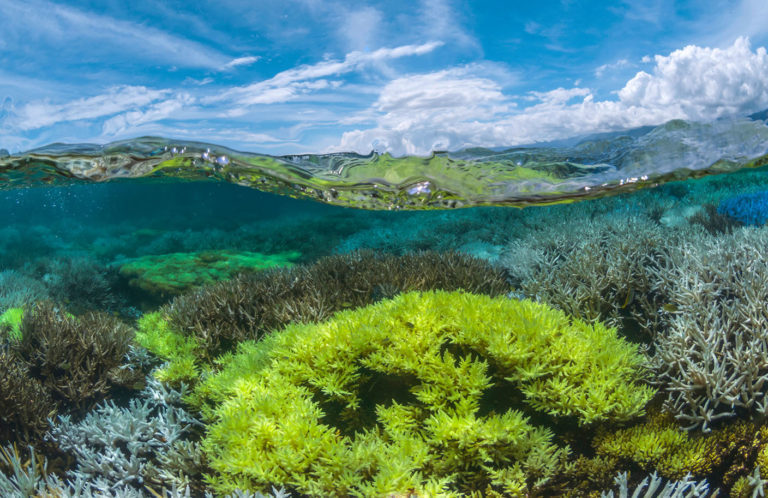Warming Temperatures and Coral Bleaching
Some scientists predict that 90% of global reefs will experience severe bleaching annually by 2055.
Most corals have a narrow temperature tolerance. When temperatures become too warm, corals will expel the symbiotic algae (zooxanthellae) that live inside them causing them to turn white and lose an important food source. Although corals can survive a bleaching event, they are more vulnerable to disease and will eventually die if the marine heatwave lasts too long.
Sea Level Rise
200 million people in coastal communities could be displaced if coral growth does not keep up with sea level rise.
Corals are predicted to end up in deeper water, which means they will receive less sunlight (vital for their food source) and grow more slowly. As shorelines erode, corals may also be more affected by polluted runoff and sedimentation.
Stronger Storms
200 million people depend on coral reefs to protect them from storm surges and waves.
As sea surface temperatures rise, hurricanes, cyclones, and typhoons that damage coral reefs become stronger. Heavy rainfall from the storms can also erode coastal lands and bring more polluted runoff into the ocean.
Ocean Acidification
48% of fossil fuel emissions are absorbed by the ocean. As oceans absorb carbon dioxide (CO2), they become more acidic. This affects the ability of reef-building corals to grow their skeletons and form the foundation for coral reefs. Weaker skeletons also make corals more vulnerable to disease and destruction by storms. In fact, research shows that when exposed to high levels of CO2, corals stop being productive and their risk of bleaching increases by up to 50%.
